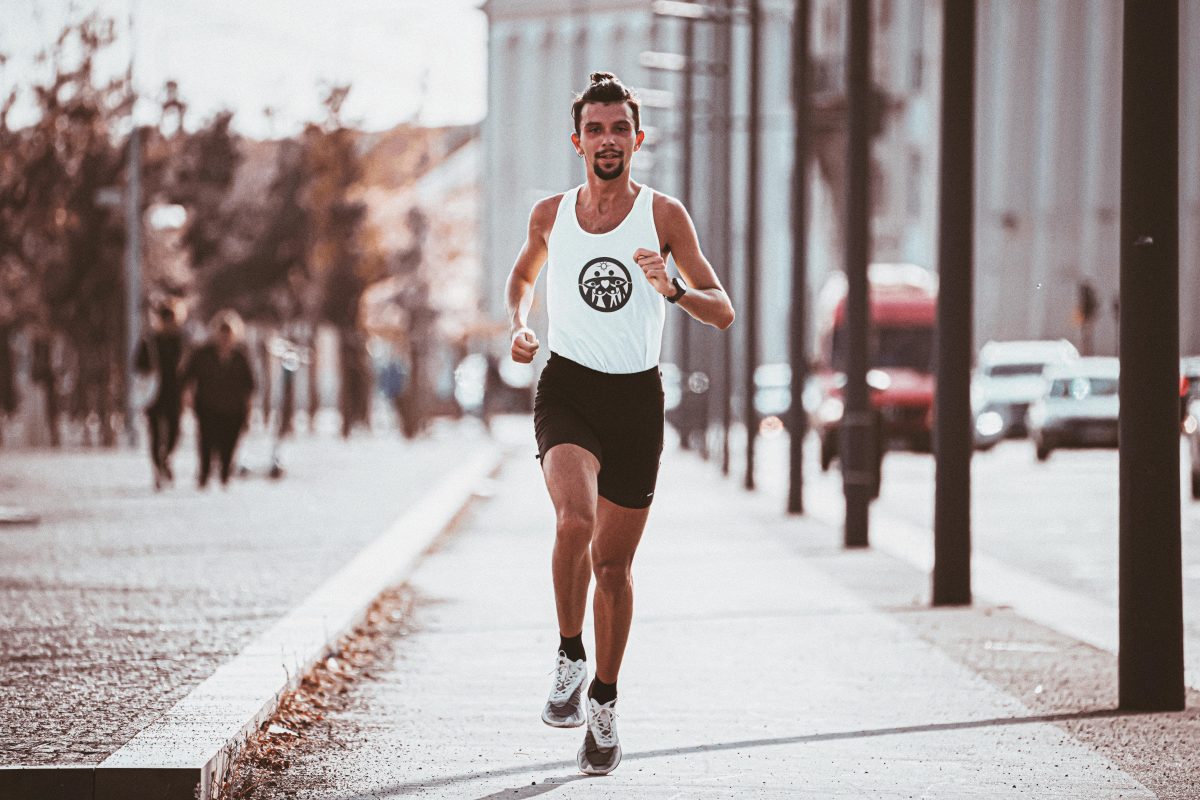Last Updated on: 14th July 2024, 09:33 am
Introduction to High-Intensity Interval Training (HIIT)

High-Intensity Interval Training, or HIIT, is a dynamic exercise strategy that alternates short bursts of intense anaerobic exercise with less-intense recovery periods. This approach maximizes calorie burn and increases fitness levels within a compressed time frame, making workouts both efficient and effective. Originating from the rigorous training regimens of athletes, HIIT has evolved over decades. It has seamlessly transitioned from the exclusive realm of professional sports to become a cornerstone in fitness enthusiasts’ routines worldwide.
The allure of HIIT lies not just in its efficiency but also in its adaptability. It caters to a wide range of fitness levels and can be tailored to suit various goals, from weight loss to improved cardiovascular health. This versatility, coupled with the promise of quick results, has propelled HIIT to the forefront of fitness trends. Today, it stands as a testament to the ever-evolving quest for optimal health and fitness, embraced by millions seeking to maximize their workout returns.
- Efficiency: Maximizes calorie burn and fitness in minimal time.
- Adaptability: Suits various fitness levels and goals.
- Quick Results: Delivers profound fitness improvements efficiently.
The Science Behind HIIT

At its core, HIIT leverages the body’s natural response to stress by alternating between high-intensity bursts and periods of less intense activity or complete rest. This method not only pushes the body to adapt and improve its aerobic and anaerobic fitness levels but also stimulates metabolism, making it a powerhouse for burning calories and fat. The science is clear: by demanding more from your body in shorter periods, HIIT triggers a metabolic response that continues to burn calories long after the workout has ended.
- Cardiovascular Health: Improves the efficiency of the heart and lungs.
- Metabolism Boost: Aids in faster fat loss compared to steady-state cardio.
- Time Efficiency: Achieves significant results in shorter timeframes.
Key Components of an Effective HIIT Workout

Duration and Intensity: Finding the Right Balance
Striking the perfect balance between duration and intensity is crucial. Short, explosive bursts of activity, typically ranging from 20 to 90 seconds, push the body to its limits, followed by brief recovery periods. This rhythm maximizes fat burning and muscle building, making every second of the workout count.
Types of Exercises: Cardio, Strength Training, and Mixed Modalities
HIIT thrives on variety. Incorporating a mix of cardio and strength training exercises ensures a full-body workout, engaging everything from the heart to the major muscle groups. This approach not only prevents boredom but also challenges the body in different ways, promoting more balanced fitness improvements. Mixed modalities, blending high-intensity cardio with strength elements, further amplify the workout’s effectiveness and efficiency.
Recovery Periods: Importance and How to Optimize
Recovery is not just a pause; it’s an active part of the workout. These moments allow the heart rate to normalize and muscles to prepare for the next round of intensity. Optimizing recovery means keeping these periods short yet sufficient, often ranging from 10 to 30 seconds, depending on the workout’s intensity. This careful calibration ensures the body remains in a heightened state of calorie burning while preparing for the next surge of effort.
- Exertion and Recovery: A choreographed dance between pushing limits and resting.
- Variety and Intensity: Ensures a stimulating and effective workout experience.
Customizing Your HIIT Routine

Assessing Fitness Level and Setting Realistic Goals
Embarking on a HIIT journey begins with understanding your current fitness level. This self-assessment guides the setting of achievable goals, whether it’s shedding pounds, enhancing endurance, or building strength. Realistic objectives not only motivate but also chart a clear path forward, ensuring progress is measurable and satisfying.
Incorporating HIIT into Your Existing Workout Plan
Integrating HIIT into your routine doesn’t mean an overhaul. Start by replacing a portion of your current regimen with HIIT sessions. This gradual introduction allows your body to adapt without overwhelming it, making the transition smooth and sustainable. Over time, as your fitness improves, HIIT can become a more dominant component of your workout plan.
Modifications for Beginners and Advanced Individuals
For beginners, the key is to start slow. Modify exercises to reduce intensity, ensuring workouts remain challenging yet doable. Shorten high-intensity intervals and extend recovery times as needed. Advanced individuals, on the other hand, can amplify their routines by increasing the duration of intense intervals, incorporating more complex movements, or reducing recovery periods. This tailored approach ensures HIIT remains effective and engaging, regardless of fitness level.
- Personalized Approach: Tailors HIIT to individual fitness levels and goals.
- Dynamic Process: Evolves with your fitness journey for maximum benefit.
- Motivation: Keeps you engaged and progressing towards your goals.
Potential Risks and How to Mitigate Them

Common Injuries and Prevention Strategies
High-Intensity Interval Training, while effective, carries a risk of injury. Sprains, strains, and muscle fatigue are common. To prevent these, start with a proper warm-up. Focus on dynamic stretches that mimic workout movements. Gradually increase the intensity of your exercises to prepare your body. Additionally, use proper form and technique during workouts. This not only enhances the effectiveness of your exercises but also significantly reduces the risk of injury.
Importance of Warm-Up and Cool-Down
Warm-ups and cool-downs are crucial. They prepare your body for the intense activity ahead and facilitate recovery afterward. A good warm-up increases blood flow to your muscles, reducing the risk of injury. Cool-downs, on the other hand, help in gradually lowering your heart rate and stretching your muscles, aiding in recovery and preventing stiffness.
Listening to Your Body: Signs of Overtraining and the Need for Rest
HIIT demands a lot from your body. It’s essential to recognize signs of overtraining, such as prolonged fatigue, decreased performance, and increased susceptibility to injuries. Listening to your body and incorporating rest days into your routine are vital. Rest days allow your muscles to recover and rebuild, making them stronger. Remember, more is not always better. Balance is key.
By understanding and mitigating these risks, you can enjoy the full benefits of HIIT safely and effectively. Remember, a well-rounded approach that includes proper warm-up, attention to form, and adequate rest will keep you on track towards achieving your fitness goals without unnecessary setbacks.
Success Stories and Testimonials: The Impact of HIIT

Transformations through HIIT are not just anecdotal; they’re backed by countless success stories. Consider the following:
- Sarah, a mother of two, turned to HIIT as a time-efficient way to regain her pre-pregnancy fitness. Within months, she not only shed the extra weight but also ran her first half-marathon, crediting HIIT for her newfound endurance and strength.
- Professional athletes, including soccer stars and Olympic sprinters, incorporate high-intensity intervals into their training, achieving peak performance and maintaining competitive edges. Their success offers compelling evidence of HIIT’s effectiveness in elite sports.
Research further solidifies HIIT’s reputation:
- A study in the Journal of Obesity found that participants performing HIIT lost significantly more body fat than those engaging in steady-state cardio, despite spending less time exercising.
- Another study in the American Journal of Physiology reported that after eight weeks of HIIT, subjects doubled their endurance capacity, an improvement typically seen with much longer endurance training.
These real-life examples and research findings underscore the transformative potential of HIIT. Whether you’re a busy parent, a professional athlete, or someone simply looking to enhance their fitness, HIIT’s proven track record makes it a compelling addition to any workout regimen.
Getting Started with HIIT: Practical Tips and Resources

Recommended Apps and Online Platforms for HIIT Workouts
Embarking on your HIIT journey is made easier with a plethora of digital resources at your fingertips:
- MyFitnessPal and Nike Training Club offer a wide range of HIIT workouts tailored to different fitness levels, complete with guidance and tracking features.
- Fitness Blender and YouTube channels dedicated to HIIT provide free, high-quality workout videos, making it simple to get started from the comfort of your home.
Equipment: Necessary vs. Optional
One of the beauties of HIIT is its minimal equipment requirement:
- Essentials: A good pair of sneakers and comfortable workout clothes.
- Optional: Dumbbells, kettlebells, and resistance bands can add variety and intensity. However, many HIIT workouts rely solely on bodyweight exercises, proving that you can achieve significant results without any equipment at all.
Creating a Supportive Community: Online Forums, Local Classes, and Group Sessions
Building a community around your fitness journey can significantly boost your motivation and commitment:
- Online forums such as Reddit’s r/HIIT offer spaces to share experiences, seek advice, and celebrate achievements.
- Local gyms often host HIIT classes, providing an opportunity to connect with like-minded individuals in person.
- Group sessions, whether virtual or physical, create a sense of camaraderie, making the challenging moments of HIIT more enjoyable and rewarding.
Starting your HIIT journey is an exciting step towards achieving your fitness goals. With the right resources, minimal equipment, and a supportive community, you’re well-equipped to embark on this highly effective workout regimen. Remember, consistency is key. Embrace the journey, and let the transformative power of HIIT reveal itself.
In Closing
HIIT maximizes fitness efficiently. It’s a journey of intensity and recovery, blending science with practicality for transformative results. Through tailored routines and community support, individuals unlock their potential, achieving goals faster than traditional methods allow. Embrace HIIT’s dynamic path to wellness, and let its proven success inspire your fitness journey.
HIIT Workouts: Benefits and Basics FAQs
Yes, HIIT can help you lose weight by significantly increasing your calorie burn both during and after the workout. The high intensity of the exercise boosts your metabolism, leading to more calories burned over time. Additionally, the muscle you build during HIIT workouts can improve your resting metabolic rate, further aiding in weight loss.
Yes, HIIT workouts can easily be done at home with minimal or no equipment. Bodyweight exercises like jump squats, burpees, and high knees can be incorporated into a HIIT routine. This flexibility makes HIIT an accessible option for those with busy schedules or limited access to a gym.
You should be working at 80-95% of your maximum heart rate during the high-intensity intervals of a HIIT workout. This level of effort is typically characterized by heavy breathing and the inability to maintain a conversation. Additionally, using a heart rate monitor can help you ensure that you’re reaching the desired intensity level.
A HIIT workout can last anywhere from 15 to 30 minutes, including warm-up and cool-down. The efficiency of HIIT means you don’t need to spend a lot of time to achieve significant health and fitness benefits. The focus is on the intensity of the work intervals rather than the duration of the workout.
For optimal results, aim to do HIIT workouts 2-3 times per week, allowing for at least one day of rest between sessions. This frequency ensures you give your body enough time to recover, as HIIT can be very demanding. Overtraining can lead to injury and burnout, so rest and recovery are as important as the workouts themselves.
HIIT can be suitable for beginners if modifications are made to the intensity and duration of the workouts. Starting with shorter bursts of high-intensity effort followed by longer recovery periods can help ease you into the regimen. It’s also important to choose exercises that match your current fitness level to avoid injury.
Beyond weight loss, HIIT can improve cardiovascular health, increase insulin sensitivity, and enhance muscular endurance. The intense nature of the workouts challenges your heart and lungs, improving overall heart health. Additionally, the improved insulin sensitivity can help in managing or preventing type 2 diabetes.
The basic HIIT workout requires no equipment, as it can be done with bodyweight exercises. However, for added intensity and variety, you can use dumbbells, kettlebells, resistance bands, or a jump rope. The key is to focus on exercises that raise your heart rate and challenge your muscles.
HIIT, or High-Intensity Interval Training, involves short bursts of intense exercise alternated with low-intensity recovery periods. This method boosts your metabolism and can burn more fat in less time. The contrast between the high and low intensity ensures that your body works harder than it does during steady-state cardio, leading to improved endurance and fat loss.
HIIT consists of short, intense bursts of exercise followed by periods of rest or low-intensity exercise, while steady-state cardio involves maintaining a consistent, moderate pace for a longer duration. HIIT is more efficient at burning calories and improving cardiovascular fitness in a shorter amount of time. Steady-state cardio, on the other hand, is less taxing on the body and can be sustained for longer periods.
Orlando is a all round athlete from Australia, now resident in Germany. His sports of passion of American Football(Offensive line), weight training and indoor rock climbing where he uses his 195cm wing span to his advantage.



